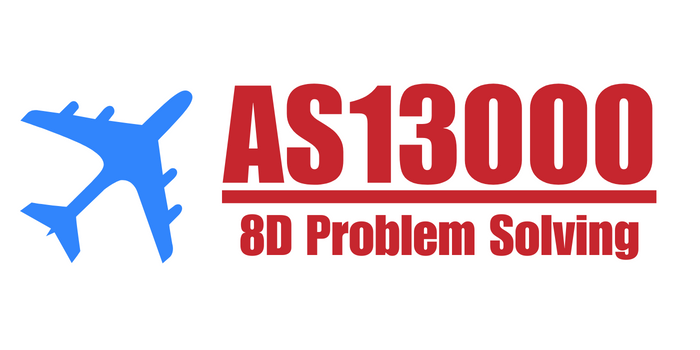AS13000 Training- 8-D Root Cause Corrective Action
AS13000 Training: Problem-Solving Requirements for Suppliers
Days: 2
Time: 7:30 a.m.- 4:30 p.m. MST
Overview
As Root Cause CAPA for Aerospace, an AS13000 training is a must-have. If you are a Boeing, Airbus, or other top OEM supplier, you need this class! All suppliers for the top OEM’s are required to have an 8D Practitioner. This course fulfills the training and testing requirements to become an 8D Practitioner.
AS13000 defines the Problem-Solving standard for suppliers within the aero-engine sector, with the Eight Disciplines (8D) problem-solving method being the basis for this standard.
| This 2-day course provides students with a comprehensive and standardized set of tools to become an 8D practitioner and meets all the requirements of “training syllabus” (see AS1300 APPENDIX C). Successful application of 8D achieves robust corrective and preventive actions to reduce the risk of repeat occurrences and minimize the cost of poor quality. This is essential to enable long-term customer-supplier relationships and positively contributes towards zero defects and customer satisfaction.
This course includes the practical application of each of the 8D disciplines. |
 |
 |
Learning Objectives:
|
Who Should Attend:
An AS13000 training is a requirement for Aerospace Suppliers of any top OEM. Any employees that will conduct a corrective action or participate as a team member, as well as any individual who would like to gain an in depth understanding of the 8-D process.
Agenda
Day 1
- Introduction & 8-D Practitioner Requirements
- Problem Solving Terminology and Definitions
- Activity #1 Standard Terminology
- Review of Standard
- Requirements for an 8-D Practitioner Appendix C
- Topics: Problem Solving Form Append. A, Team Dynamics, Questioning and Listening Techniques, Basic Tools overview
- Methods: Appendix B: Questions, Brainstorming, Comparison Sheets, Check Sheets/Talley Sheets, Histograms, Scatter Diagrams, Run and Control Charts, Pareto Analysis, Human Factors, Analysis Techniques, Root Cause Chain
Case Studies:
- Activity #1.1 Inputs for Process Flow Diagram
- Activity #1.2 Is/Is Not and 8D Form
- Case Studies Cont. :
- Activity #2.1 5W2H Define the Problem
- Activity #2.2 Define the Problem 8-D form
- Activity #2.3 PCB CAR Review/8-D D2 & D3
- Activity #3.1 Ishikawa – Fishbone
Day 2
- Case Studies Cont. :
- Activity #2.1 5W2H Define the Problem
- Activity #2.2 Define the Problem 8-D form
- Activity #2.3 PCB CAR Review/8-D D2 & D3
- Activity #3.1 Ishikawa – Fishbone
 Location
Location
 Register
Register Login
Login
